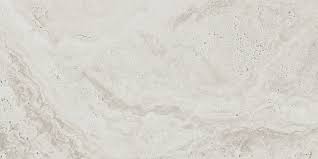When it comes to natural stone, travertine is a popular choice for its unique texture. This sedimentary rock is formed by the precipitation of minerals from hot springs or limestone caves, resulting in a distinctive appearance that sets it apart from other types of stone. In this blog post, we will delve into the world of travertine texture and explore its role in both aesthetics and practicality. From identifying key textural characteristics to innovative uses in modern design, we will cover everything you need to know about travertine’s tactile appeal.
Exploring Travertine’s Tactile Appeal
One of the most striking features of travertine is its texture. Unlike other stones such as marble or granite, which have a smooth and polished surface, travertine has a more organic and rustic feel. This is due to the presence of small holes and pits on the surface, known as “vesicles”, which are created by the escape of carbon dioxide during the formation process.
The texture of travertine can vary greatly depending on the type and source of the stone. Some varieties may have a smoother and more uniform texture, while others may have a more pronounced and irregular pattern. This makes each piece of travertine unique and adds to its overall charm.
Apart from its visual appeal, the texture of travertine also has a tactile quality that is often described as warm and inviting. This is because travertine is a porous stone, which means it has tiny pores and channels that can be felt when touched. This gives it a natural and earthy feel, making it a popular choice for flooring, countertops, and other interior and exterior applications.
The Role of Texture in Travertine’s Aesthetic
Texture plays a crucial role in the aesthetic appeal of travertine. It adds depth and character to the stone, making it visually interesting and pleasing. The natural variations in texture also give travertine a sense of movement and dimension, making it a versatile choice for both traditional and contemporary designs.
Moreover, the texture of travertine can also influence its color and overall appearance. For instance, a honed or polished finish can enhance the color and veining of the stone, while a tumbled or brushed finish can soften its appearance and create a more rustic look. This makes texture an important factor to consider when selecting travertine for your project.
Identifying Key Textural Characteristics
To fully appreciate the beauty of travertine’s texture, it is important to understand its key characteristics. These include:
- Vesicles: As mentioned earlier, these are small holes or pits on the surface of the stone that are created by the release of carbon dioxide during the formation process. They can range in size from tiny pinholes to larger craters, and their distribution can greatly affect the overall texture of the stone.
- Pores: Travertine is a porous stone, which means it has tiny pores and channels that can be seen and felt on the surface. These pores are formed by the dissolution of minerals and organic matter during the stone’s formation. The size and density of these pores can vary depending on the type of travertine, giving each piece a unique texture.
- Veins: Similar to other types of stone, travertine can have veins or bands of different colors running through it. These veins are formed by the presence of impurities such as iron oxide or organic matter, and they can add to the visual interest and texture of the stone.
Classification of Travertine Textures
Travertine can be classified into three main categories based on its texture: honed, polished, and tumbled. Each of these finishes has its own distinct characteristics and can greatly impact the overall look and feel of the stone.
- Honed: This is the most common type of travertine finish, characterized by a smooth and matte surface. The stone is sanded to create a flat and even texture, which can range from slightly rough to completely smooth. Honed travertine has a more natural and rustic appearance compared to other finishes.
- Polished: As the name suggests, this finish involves polishing the surface of the stone to achieve a glossy and reflective appearance. This process also fills in any holes or voids on the surface, resulting in a smoother and more uniform texture. Polished travertine has a more elegant and sophisticated look, making it a popular choice for high-end projects.
- Tumbled: This finish gives travertine a weathered and aged appearance by tumbling the stone with abrasive materials. This process creates a textured and uneven surface, with rounded edges and corners. Tumbled travertine has a more antique and rustic feel, making it a popular choice for outdoor applications such as patios and pool decks.
Texture as a Factor in Travertine Selection
When selecting travertine for your project, it is important to consider the texture of the stone along with other factors such as color and finish. The right texture can greatly enhance the overall aesthetic of your space, while the wrong one can make it look out of place.
For instance, if you are going for a more modern and sleek look, a polished or honed finish would be a better choice. On the other hand, if you want to create a more rustic and natural feel, a tumbled or brushed finish would be more suitable. It is also important to consider the location and purpose of the stone, as some textures may be more practical than others. For example, a honed finish may be more suitable for high-traffic areas, while a tumbled finish may be better for outdoor use.
Enhancing Travertine’s Texture through Fabrication
Apart from the natural texture of travertine, it is also possible to enhance or alter its texture through fabrication techniques. This involves manipulating the surface of the stone to achieve a desired look or feel.
One common technique used to enhance travertine’s texture is called “brushing”. This involves brushing the surface of the stone with wire brushes to create a slightly rough and textured finish. This can be done on honed or tumbled travertine to add more depth and character to the stone.
Another technique is called “flaming”, which involves exposing the surface of the stone to high temperatures to create a rough and textured finish. This is often used on outdoor applications such as pool coping or pavers, as it provides better traction and slip resistance.
Preserving Travertine Texture Over Time
As with any natural stone, travertine’s texture can change over time due to wear and tear, exposure to the elements, and other factors. However, there are steps you can take to preserve its texture and keep it looking beautiful for years to come.
Firstly, it is important to properly seal your travertine to protect it from stains and moisture. This will not only help maintain its color and appearance but also prevent any damage to its texture. Secondly, regular cleaning and maintenance can go a long way in preserving the texture of your travertine. Avoid using harsh chemicals or abrasive cleaners, as they can damage the surface of the stone and affect its texture.
Lastly, if you notice any changes in the texture of your travertine, such as an increase in holes or pits, it is best to consult a professional for repair or restoration. This will ensure that the texture of your stone is restored to its original state and continues to add to the overall beauty of your space.
Innovative Uses of Travertine’s Textural Qualities
Travertine’s unique texture has not only made it a popular choice for traditional applications such as flooring and countertops but also for more innovative uses in modern design. Here are some creative ways in which travertine’s texture has been incorporated into different spaces:
- Accent walls: The natural variations in texture make travertine a great choice for accent walls. Whether used in its natural form or fabricated to enhance its texture, travertine can add depth and interest to any room.
- Textured backsplashes: A textured travertine backsplash can add a touch of elegance and sophistication to any kitchen or bathroom. The texture of the stone can be further enhanced by using different finishes or patterns, creating a unique and eye-catching feature.
- Furniture: Travertine’s tactile appeal makes it a great material for furniture pieces such as coffee tables, side tables, and even benches. The texture of the stone adds a natural and earthy element to these pieces, making them stand out in any space.
- Outdoor sculptures: The durability and weather-resistant properties of travertine make it an ideal material for outdoor sculptures. Its unique texture can add a touch of artistry and creativity to any garden or outdoor space.
Travertine Texture in Modern Design
While travertine is often associated with traditional and classic designs, it has also found its way into modern and contemporary spaces. In recent years, there has been a growing trend towards incorporating natural elements and textures into modern design, and travertine fits perfectly into this concept.
One of the reasons for this is the versatility of travertine’s texture. It can be honed, polished, tumbled, or brushed to achieve different looks and styles, making it suitable for a wide range of design aesthetics. Additionally, the warm and inviting feel of travertine’s texture can balance out the clean lines and sleek surfaces commonly seen in modern design.
Another factor contributing to the use of travertine in modern design is its sustainability. As a natural stone, travertine is an eco-friendly and renewable material, making it a popular choice for environmentally conscious designers and homeowners.
Conclusion
In conclusion, the texture of travertine is a key factor that sets it apart from other types of stone. Its unique and tactile appeal adds to its overall aesthetic and makes it a popular choice for various applications. From identifying key textural characteristics to exploring innovative uses in modern design, we have covered everything you need to know about travertine’s distinctive texture. Whether you prefer a honed, polished, or tumbled finish, there is no denying the timeless beauty and charm of this natural stone. Back Continue WriteNext
Read more blogs : Unveiling the Unseen: Innovations Yet to Be Realized




